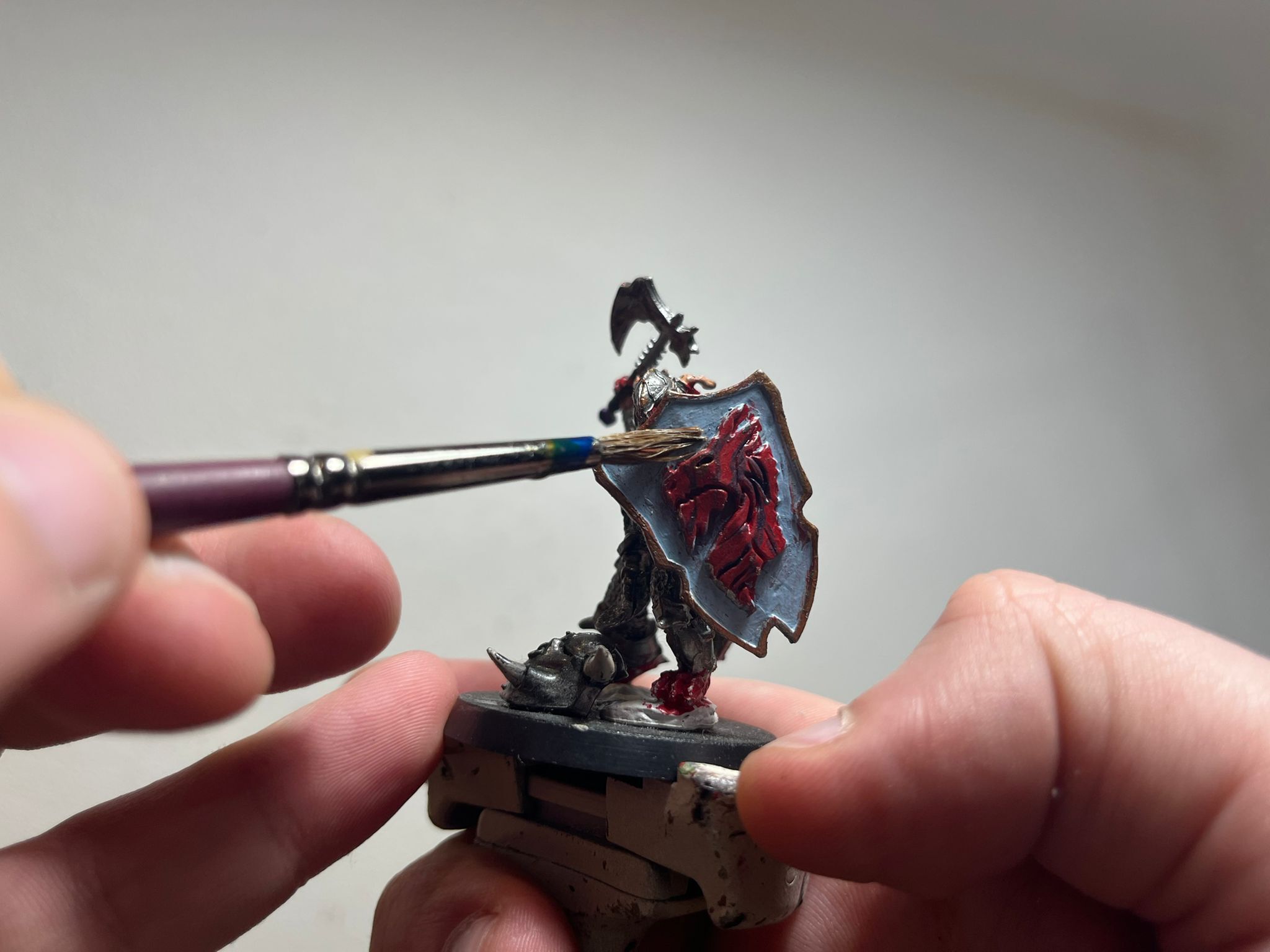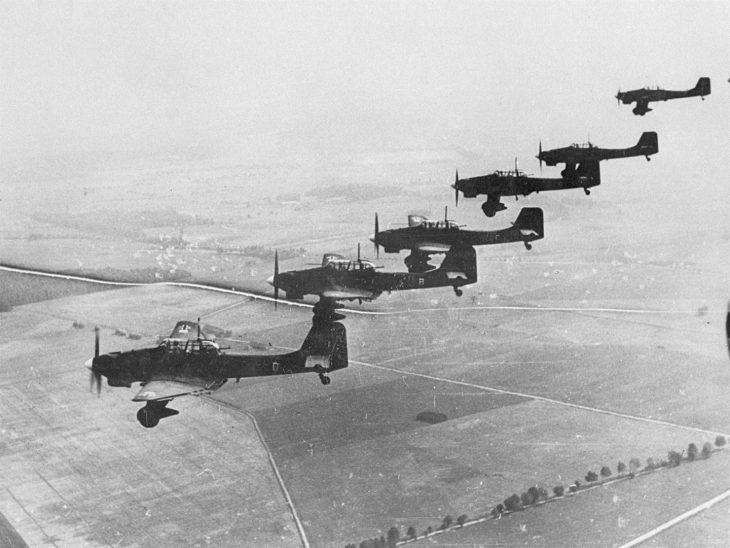
Of all historical events, World War II left a bloody legacy that still remains to this day. Claiming the most lives of any war in history, WW2 is still the bloodiest of any human conflict in centuries. As one of the things you’d learn about in school, World War II stands as a bad example of history repeating itself. Learn all about its harsh realities and how the world coped with it through these WW2 facts.
- WW2 primarily involved conflict between the Axis Powers and the Allied Powers.
- The Axis Powers included Germany, Italy, and Japan.
- Meanwhile, the Allied Powers included Britain, China, the Soviet Union, and the USA.
- Both sides lost an estimated total of 24 million troops during the war.
- All in all, WW2 claimed around 73 million lives.
- Historians officially place WW2’s beginning on September 1st, 1939, with the German invasion of Poland.
- However, the war between China and Japan began in 1937.
- The USA also entered WW2 only towards the end of 1941.
- The Axis Powers generally enjoyed stunning military successes until 1942.
- A series of Allied victories in 1942 turned the war in their favor in that year.
- Historians also officially set the war’s end with Japan’s surrender on August 14th, 1945.
- However, Italy officially surrendered to the Allies on September 03, 1943.
- Germany had also surrendered to the Allies on May 7th, 1945.
- The war’s end saw the formation of the United Nations (UN) to prevent a future war.
- The war’s end also saw the start of the Cold War between the Free World and the Communist Bloc.
- Russians also refer to WW2 as the Great Patriotic War.
- The Japanese also have their own name for the war, the Greater East Asia War.
- Americans separate what they call the Pacific War from the European Theater of WW2.
- The war’s devastation set the stage for large-scale decolonization in the following decades.
- Over an estimated 100 million troops overall fought during the war.
The roots of WW2 in Europe go back to WW1.
In 1918, Germany’s defeat in World War I led to the signing of the Treaty of Versailles. Aside from being an armistice, the terms of the treaty cost Germany 13% of its prewar territory and all overseas possessions. The treaty also stripped Germany of the right to keep any real military forces and forced the country to pay over $30 billion to the victors.
Such harsh terms caused great bitterness in Germany, especially since they already defeated the Russians before losing in Western Europe. This led to the belief that Germany only lost in the west because of betrayal from Communists and Jews. Right-wing groups later used this as propaganda to gain power.
Fascism first arose in Italy in the 1920s.
Before World War I, Italy and Germany had an alliance with each other. However, Italy joined Germany’s enemies in exchange for territory in Eastern Europe. At the Versailles Peace Conference, the Italians only received some of what the Allies promised. The other territories went to new countries in Eastern Europe, such as Yugoslavia, to grant self-determination to local ethnicities. This led to a belief in what historians call a Mutilated Victory, where Italy won the war only for their allies to deny them their prize.
Together with economic difficulties after the war, this led Benito Mussolini and his followers to march on Rome between October 27th to 29th in 1922. This forced King Victor Emmanuel III to brand Mussolini as Duce, essentially a dictator governing in the King’s name. Mussolini had earlier founded fascism in 1919, referencing small axes used in Roman times to symbolize government authority.
Adolf Hitler first tried to take control of Germany in 1923.
The Munich Beer Hall Putsch took place between November 8th and 9th in 1923. Inspired by Mussolini and the Italian Fascists, Hitler led the Nazi Party in rallying other right-wing groups led by former German Army officers. Together, they hoped to overthrow the local government and seize control of Munich before doing the same to the rest of Germany. Instead, the police crushed the coup, with Hitler and his associates arrested.
However, the Nazi Party used the following trials to make themselves look like martyrs against the government that sold Germany to its enemies. Together with a sympathetic judge, Hitler and his associates only received sentences of up to 5 years in prison. In fact, Hitler managed to secure a release from prison after only 8 months, for good behavior. Now, there’s one for surprising WW2 facts.
Japan seized Manchuria in 1931.
Japan already had troops in Southern Manchuria, dating back to their victory in the Russo-Japanese War of 1904 to 1905. The troops there had developed a dismissive attitude towards the civilian government, with extreme nationalist officers having taken control as of 1931. In September, they staged the Mukden Bridge Incident, a supposed terrorist bombing of the bridge of the same name. This gave Japan’s Kwantung Army an excuse to seize control of the rest of Manchuria.
While the government in Tokyo had neither approved nor known of the Kwantung Army’s plans, they couldn’t afford to back down. If they did, they’d give the impression of weakness, humiliating both themselves and their country. Instead, they allowed the Kwantung Army to establish the puppet state of Manchukuo, leading to international condemnation. In response, Japan withdrew from its membership in the League of Nations, which had recognized Chinese sovereignty over Manchuria.
Adolf Hitler finally became Chancellor of Germany in 1933.
In the latter part of the 1920s, Germany had actually enjoyed economic prosperity. However, it all came to an end with the Great Depression. Widespread poverty provided opportunities for Hitler and the Nazi Party, who blamed the depression, the poverty, and everything Germany had suffered in the past on the Jews and Communists.
This eventually led to the Nazis getting a 33% plurality in the German Reichstag in the November 1932 elections, and forcing President Paul von Hindenburg to appoint him Chancellor. After staging acts of terrorism then blaming it on the Communists, in particular the burning of the Reichstag on February 27, 1933, Hitler gained emergency powers. And with the death of President Hindenburg in August 1934, Hitler and the Nazis had finally gained complete control of Germany. Yet another foreboding example of WW2 Facts.
Japan and China agreed to a truce in 1933.
China didn’t quietly accept Japan’s conquest of Manchuria, and Japan wasn’t satisfied with just Manchuria either. In January 1932, anti-Japanese riots broke out in Shanghai, leading to Japanese and Chinese troops fighting each other in the city. And from January to May 1933, Japanese forces fought to seize control of Inner Mongolia.
Following their success, they added the province to Manchukuo, expanding its southern border to the Great Wall. With the threat of full-scale war hanging between China and Japan, both nations finally agreed to the Tanggu Truce at the end of May 1933. Even then, everyone knew that a full-scale war was only a matter of time.
Hitler quickly destroyed the Treaty of Versailles over the years after taking power.
As we previously mentioned, the Treaty of Versailles banned Germany from keeping real military forces. Their army had a limit of only 100,000 men and could only use certain equipment, while their navy could only have a limited amount of ships.
Once Hitler had gained control of Germany, he immediately started expanding the army, made plans to expand the navy, and founded an air force. He also suspended all further payments required of Germany in the Treaty of Versailles.
Other countries tried to block the rise of German power in 1935.
In April 1935, Britain, France, and Italy formed the Stresa Front to present a united front against Germany. It collapsed only 2 months later in June when Britain independently made the Anglo-German Agreement (AGNA) with Germany. In May 1935, France and the Soviet Union also made an anti-German agreement.
However, France’s membership in the League of Nations left the agreement meaningless, as the league limited both France’s ability to actually enforce the agreement.
Italy invaded Ethiopia in 1935.
Italy had first tried to colonize Ethiopia in the 19th Century, only to lose the First Italian-Ethiopian War. In 1935, Mussolini decided to finish what started nearly a century ago and invaded Ethiopia. This time, the Italians succeeded in conquering Ethiopia and adding to their existing colonies in East Africa.
Emperor Haile Selassie of Ethiopia escaped to Britain, to ask for help to his country. Both Britain and France condemned Italy, and supported League of Nations sanctions against them. However, German support for Italy meant Britain and France didn’t want to risk too much opposition, as it could start a war. In return for Germany’s support, Italy agreed not to oppose German plans for Austria.
Chinese Nationalists and Communists alike agreed to a ceasefire after the Xi’an Incident of 1936.
Taking place in December 1936, the Xi’an Incident involved officers of the Republic of China taking Generalissimo Jiang Jieshi into custody. Their goal wasn’t to replace him, however, but to convince him to end his campaign against the Communists for the time being. In doing so, they hoped to form a united front in China against the Japanese. Jiang eventually agreed – and, after negotiating with each other – the rest of the Nationalists and the Communists agreed to set aside their difference to focus on their common enemy.
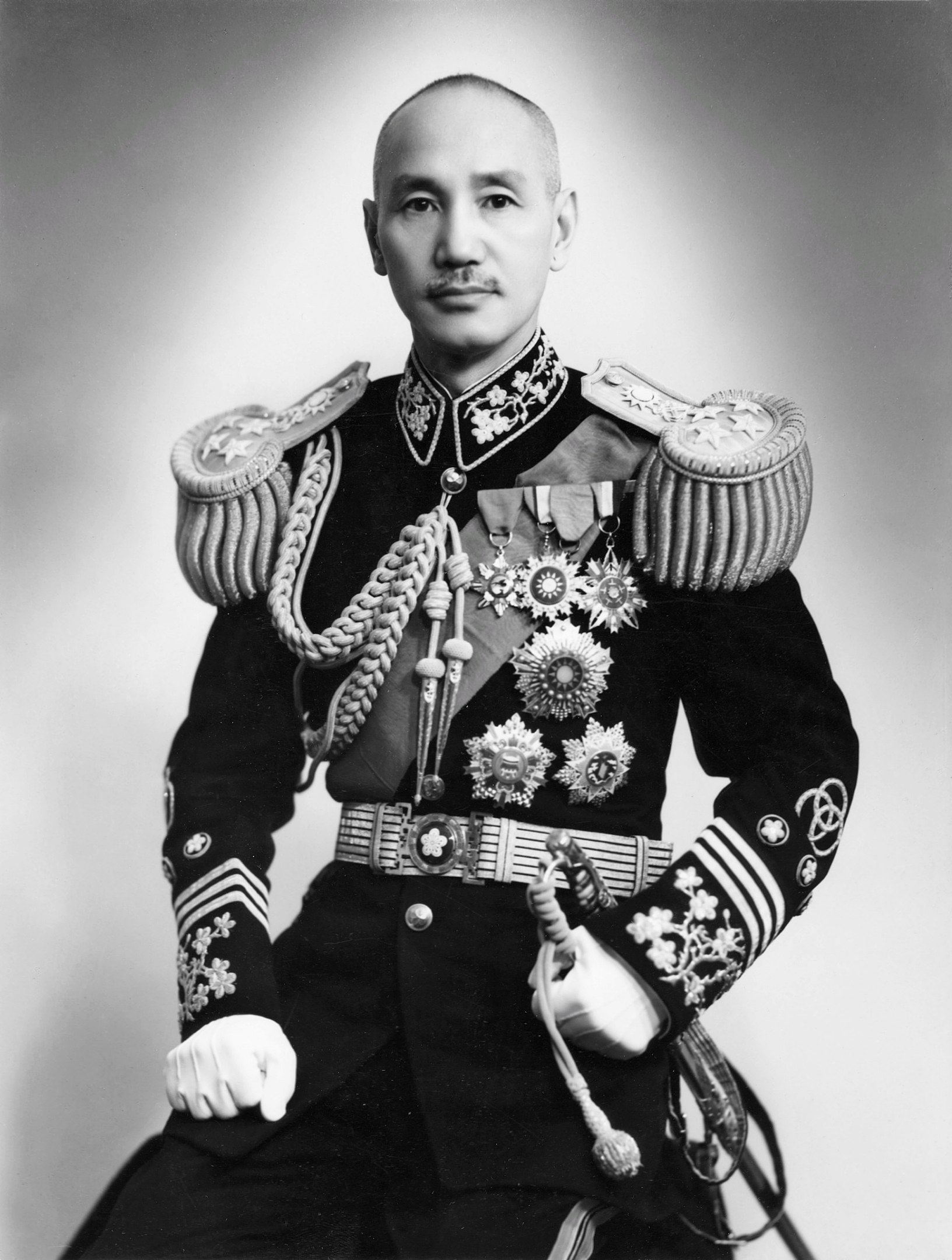
Civil war broke out in Spain in 1936.
The election of a left-wing government in February 1936 saw a series of measures that split Spanish society apart. These included policies similar to those in the Soviet Union: from land seizures, attacks on the Catholic Church, and even mob violence against enemies of the left-wing government. It didn’t help that some members of the government publicly stated that Spain was on the road to Soviet-style socialism.
This finally led to a military coup in July 1936, sparking the Spanish Civil War. It pitted the government backed by the other democracies and the Soviet Union, against the nationalists backed by Germany and Italy. It ended in April 1939 with a Nationalist victory and the exile of the surviving Republican leaders. The war also cost Spain dearly, with over 450,000 troops and civilians lost amidst the fighting.
Germany used the Spanish Civil War to test out various military innovations.
These innovations included massing tanks together into a separate force, instead of using them in small groups to support infantry attacks. The Spanish Civil War also saw the Germans experiment using light bombers to support attacks on the ground. Other innovations included terror bombing, using large numbers of bombers to attack enemy cities, aiming to destroy industry and break morale.
All these experiments and more allowed the Germans to refine their plans for the future. In fact, all of Germany’s future successes have their roots in their successes during the Spanish Civil War. Definitely one of the darker WW2 facts.
The Marco Polo Bridge Incident of 1937 marked the beginning of the Second Sino-Japanese War.
Unlike the Mukden Bridge Incident, historians today still consider the beginning of the Marco Polo Bridge Incident unclear. Japanese forces did act aggressively afterward, but it remains uncertain whether the incident was deliberately staged or not.
Regardless, the conflict between Japanese and Chinese forces over the Marco Polo outside of Wanping quickly spiraled out of control. Despite efforts from both sides to keep things under control, open war broke between China and Japan.
China and the Soviet Union signed an agreement in 1937.
On August 21st, 1937, China and the Soviet Union signed the Sino-Soviet Non-Aggression Pact. This allowed the Chinese to stop worrying about the Soviets to the north, and to focus even further on the Japanese. It also had the effect of driving China and Germany apart, as Germany had supported China’s modernization before the war.
In fact, Germany at the time had divided opinions on whether China or Japan would make for a better ally. China’s arrangement with the Soviet Union led the Germans to choose Japan.
Japanese advances in 1937 culminated in the brutal Nanjing Massacre.
After the Chinese defeat in the Battle of Nanjing, rumors spread that elements of the Chinese National Revolutionary Army (NRA) had hidden away in the city. Japanese troops moved in to root them out but quickly lost control. This resulted in a month-long series of rapes, lootings, and killings across the city. Up to 300,000 civilians died at Japanese hands, while the number of victims of rape, mutilation, and other crimes goes far higher.
Historians consider the Nanjing Massacre one of the worst war crimes in the 20th Century and remains a major hotspot for Sino-Japanese relations today. Though both the Japanese Emperor and government officially admitted and apologized for the massacre, memories of the massacre hang heavy. In particular, that Japanese history books downplay the massacre, and a few officials deny it ever happened, keeps the issue pressing between the two nations.
The Japanese continued to advance in China over the course of 1938.
Although the Chinese managed to defeat the Japanese at Tai’erzhuang in March 1938, the Japanese took Xuzhou in May. In one of the more surprising WW2 facts, the Chinese deliberately caused floods in the Yellow River area to slow the Japanese advance. This gave the Chinese time to strengthen Wuhan’s defenses, but the Japanese still managed to take the city in October.
By the end of the year, the Chinese finally managed to stalemate the Japanese.
In a bitterly ironic example of WW2 Facts, the Nanjing Massacre, and Japan’s Three Alls Policy (Kill All, Burn All, Loot All) made the Chinese determined to win no matter the cost against Japan. At this point, the Chinese were past the point of negotiation. Along with the successful evacuation of the government from Nanjing to Chongqing, Japan’s inability to match Chinese numbers, and the sheer size of China, the Japanese advance finally ground to a halt by the year’s end.
The late 1930s divided the Japanese warlords over their plans for future campaigns.
Specifically, the warlords divided themselves between the Go North and Go South options. The army supported the Go North option, with the goal of not just conquering China, but also the Soviet Far East. In contrast, the navy supported the Go South option, with the goal of conquering the Western colonies in Southeast and South Asia.
The late 1930s also saw the British and the French attempt to appease Germany.
Appeasement basically involved not responding to German violations of treaty terms and other nations’ sovereignty. The Anglo-French leaders hoped that eventually, Germany would grow satisfied and settle down. It started with Hitler’s expansion of the German military, as mentioned earlier. In 1936, German troops returned to the Rhineland, which the Treaty of Versailles had forbidden German troops from entering. Then in 1938, Austria united with Germany, again forbidden by treaty.
Later that year, Hitler intimidated British Prime Minister Neville Chamberlain and French Prime Minister Edouard Daladier into the Munich Agreement. In exchange for Germany taking the German-speaking Sudeten region from Czechoslovakia, Germany agreed to respect Czechoslovakia’s continued independence.
Hitler breaking the Munich Agreement in March 1939 led Britain and France to make an arrangement with Poland.
A year after signing the agreement, Germany and Hungary occupied Czechoslovakia. Germany annexed the Czech-speaking regions of Bohemia and Moravia, while Hungary took a chunk of territory in the east of the country. The rest of Slovakia, in turn, became a German puppet state. This move on Germany and Hungary’s part led Anglo-French leaders to conclude that appeasement had completely failed.
Predicting that Hitler would next turn on Poland, Britain and France officially guaranteed Poland’s independence. They also warned Germany that any violation of Polish sovereignty would result in war.
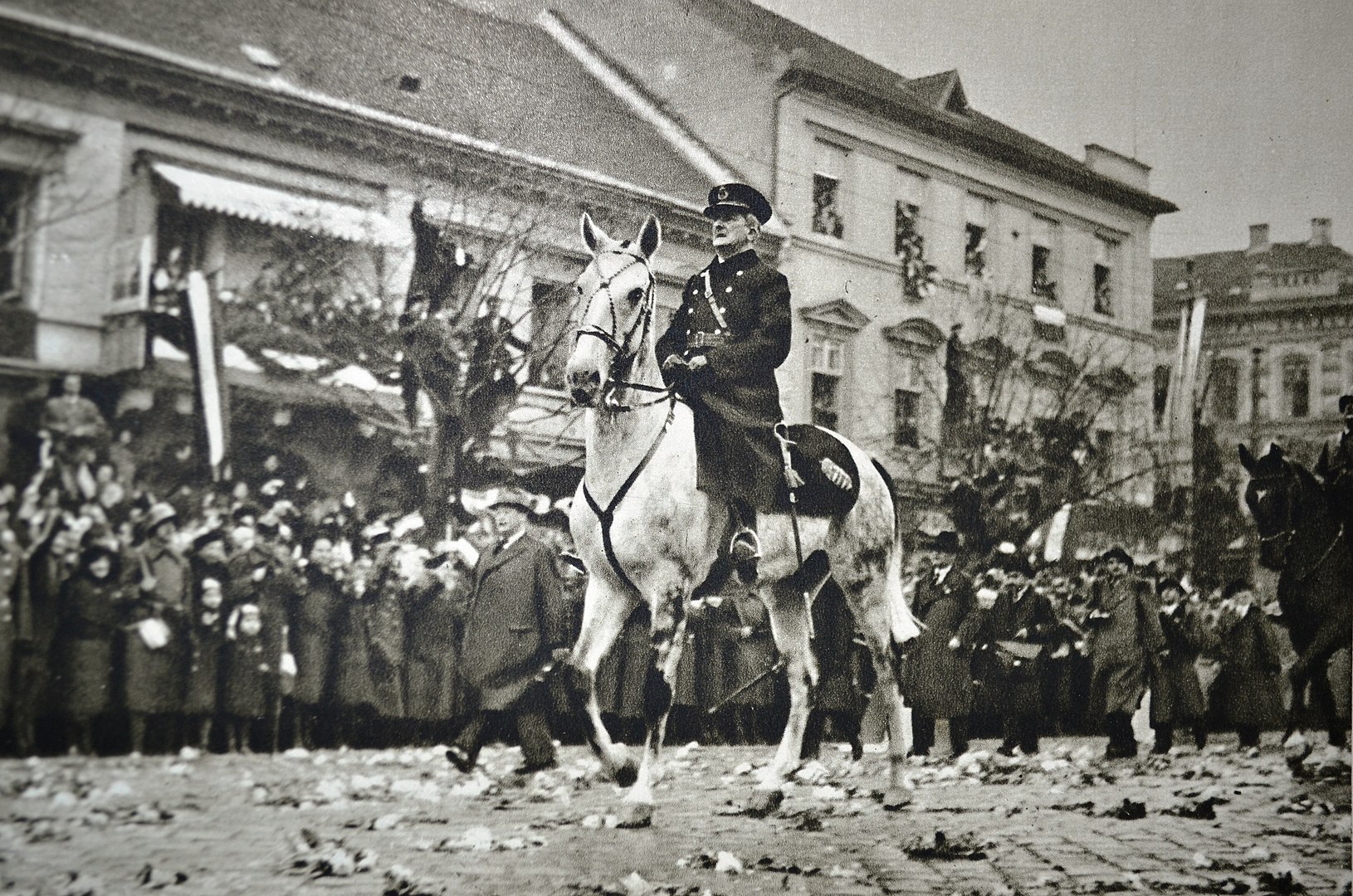
Germany and the Soviet Union also reached an agreement in 1939.
This was the Molotov-Ribbentrop Pact, named for the Soviet and German diplomats who negotiated it, respectively. It completely stunned the British and the French, who had thought that Nazi Germany and the Soviet Union could never come to an arrangement with each other.
With this arrangement, Germany and the Soviets agreed to divide Poland between them and to avoid fighting each other in war. Germany also recognized the Baltic States of Lithuania, Latvia, and Estonia as areas of Soviet interest. Talk about strange times and strange bedfellows, as we see it here, at WW2 Facts.
Britain made one last attempt to prevent war in August 1939.
Unfortunately, Germany’s demands proved too much for the Poles. Specifically, the Germans demanded to have the Danzig and the surrounding Polish Corridor. Doing so would have destroyed the Polish economy, and completely left them at the Germans and the Soviets’ mercies.
With Britain’s efforts to prevent war failing, and the Poles determined to fight for their freedom, Germany invaded Poland on September 1st, with the Soviets also invading by September 17th.
Germany and the Soviets quickly conquered Poland over September to October of 1939.
It took the Germans only 8 days to reach the Polish capital in Warsaw. In that time, they also took the Polish Corridor, Danzig, and linked up with the German province of East Prussia on the other side of the corridor. A Polish counterattack on September 9th managed to halt the German advance, but the Germans just outflanked and then surrounded the Poles.
The Soviet invasion of East Poland faced only minimal resistance, and the region quickly became occupied. Warsaw managed to hold out until September 27th, with the last of the Polish Army surrendering on October 6th. However, the Polish government managed to escape to Britain, where they formed a government-in-exile.
The USA began helping the Allies in every way they could even as early as 1939.
Around this time, the US public grew increasingly opposed to Japanese expansion in the Pacific. Americans in general sympathized with the Chinese, especially after the Nanjing Massacre. In 1939, the USA decided not to extend a trade agreement with Japan. The US government also passed Cash and Carry in that year, letting foreign nations buy American weapons so long as they carried them in their own ships, allowing the USA to remain officially neutral while helping the Allies.
In 1940, the USA introduced the first of many Export Control Acts that banned the export of chemicals, machinery, and raw materials to Japan. The Fall of France also led the USA to trade destroyers with Britain, in exchange for US bases in British territories in the Western Hemisphere. Congress soon passed Lend-Lease, giving more help to the British, though the US public still generally opposed outright entering the war.
The Soviets also moved to take control of the Baltic States around the same time.
With German support, the Soviets forced Lithuania, Latvia, and Estonia to allow Soviet troops to base themselves on their soil even before the invasion of Poland. This set the stage for their eventual annexation by the Soviet Union in June 1940.
Finland’s defiance of the Soviets led to the Winter War.
Much like with the Baltic States, the Soviets demanded the Finns allow Soviet troops on their soil. They also demanded territory around Leningrad, in the Gulf of Finland, and in the Barents Sea. After some discussion among them, the Finns rejected the demand, while the Soviets invaded their country. So began the Finno-Soviet War, or as they sometimes call it, the Winter War.
The Finns’ determined defense of their country stunned the Soviets.
The Soviets expected a quick and easy war, considering the sheer difference between them and the Finns. Finland was a small country in Eastern Europe, while the Soviet Union was an industrial superpower, stretching across Northern Eurasia. Instead, under Field Marshal Carl Mannerheim, the Finns stopped the Soviet advance cold. The Finns had always feared a possible war with the Soviets, and so had prepared many fortresses facing the Soviet Union. The Soviets’ own internal problems also ironically left them unprepared for winter fighting against the Finns. So much so, that while Soviet troops froze in their trenches, Finnish troops enjoyed centralized heating and even saunas in their fortresses. It was only after Semyon Timoshenko took command of the Red Army in January 1940 that the Soviets finally made headway. In the end, the Finns lost 11% of their prewar territory, but they made the Soviets pay for it.
Simo Hayha became a Finnish hero during the Winter War.
They called him the White Death, from how the sniper appeared invisible while hiding in the snow. He killed over 500 men with his sniper rifle, easily the highest count of any sniper in any major war, and in a span of fewer than 100 days at that. This made him an awe-inspiring figure among the Finns, with the Finnish government further developing Hayha’s reputation for propaganda purposes.
Even more awesome was the fact that he was no career soldier, and was, in fact, just a farmer with reservist training. Only the Soviet invasion gave him a reason to go to war, and for all his fame, Hayha only ever saw himself doing his duty at the time. How’s that for astounding WW2 Facts?
The Finns also perfected the Molotov Cocktail during the Winter War.
The Spaniards were actually the first to use them, during the Spanish Civil War. They filled glass bottles with gasoline, closed them with a rag, let the gasoline soak the cloth before lighting it, and then threw them at a target. The Finns, though, used a mix of alcohol, kerosene, potassium nitrate, and tar, which had a similar effect as napalm.
They also used special matches or chemical triggers to remove the need to light the bottle before throwing it. The Finns also discovered that leaving a third of the bottle also made it more likely to break. With that, the Finns used Molotov’s to set Soviet tanks on fire. The Soviet crew would then abandon their tank, leaving them vulnerable to gunfire in the open.
The Finns also came up with the name of Molotov Cocktail during the Winter War.
They came up with the name after Soviet Foreign Minister Vyacheslav Molotov claimed that the Soviets weren’t bombing Finland, but delivering food to starving people. The Finns mockingly described their use of Molotov Cocktails against the Soviets as “drinks to go with the food.” That’s only one of many dark WW2 facts.
Germany invaded Scandinavia in April 1940.
They did so in response to Allied attempts to cut Germany’s supply of iron ore from Scandinavia. Almost half of Germany’s iron ore came from Sweden and Norway, without which Germany wouldn’t have the steel it needed to fight the war. Britain used mines and submarines to try and cut this supply line, leading the Germans to invade Denmark on April 9.
Denmark fell within the day, with Norway coming under invasion on the same day. Though the Allies sent men to help defend Norway, and the Royal Navy tried to cut off supplies and reinforcements from Germany, Germany had complete control of Norway by June.
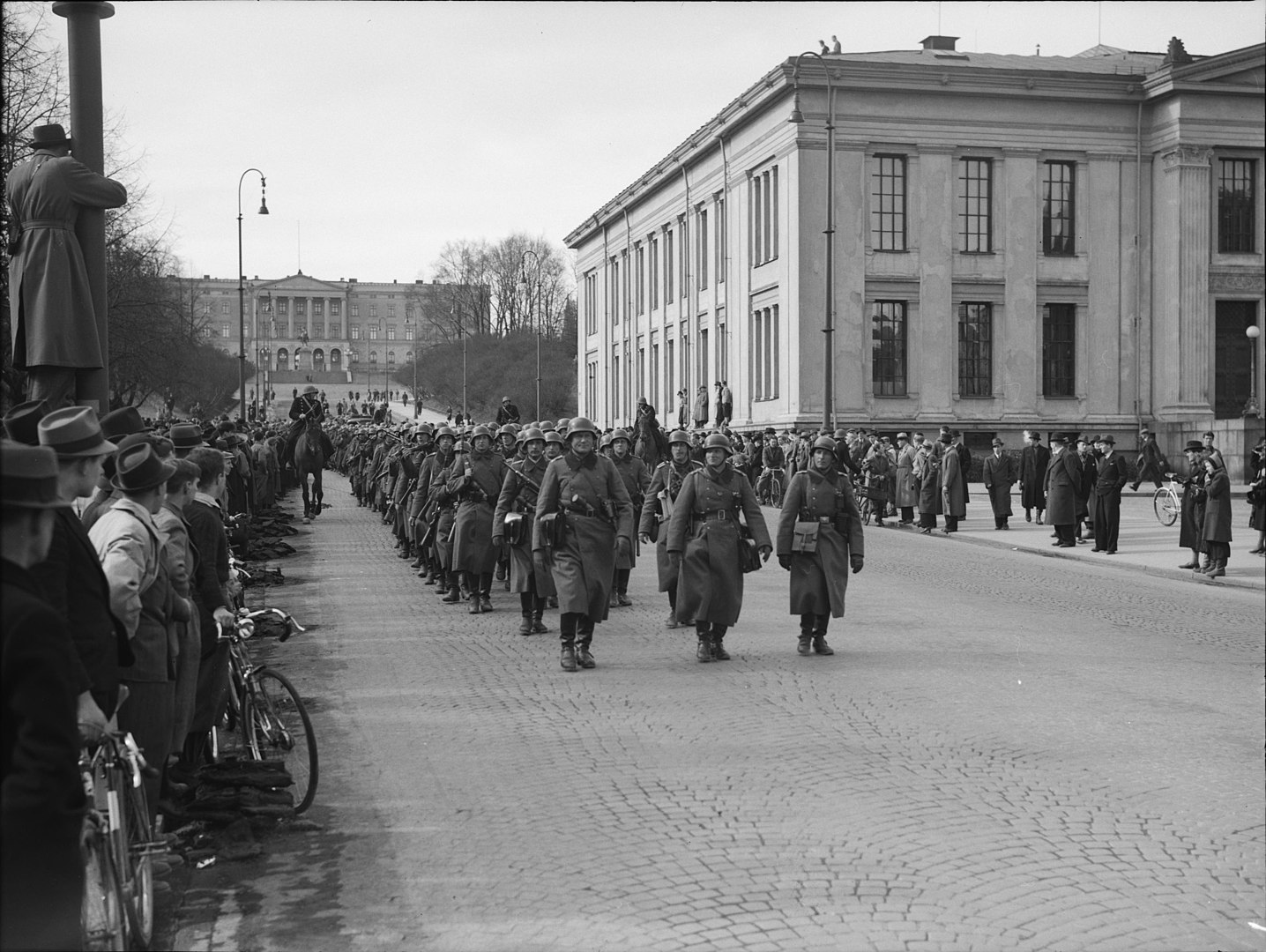
The defeat in Norway led to Winston Churchill becoming the British Prime Minister.
It especially stung the British, as the Royal Navy had more ships and better crews compared to the German Kriegsmarine. The Fall of Norway thus became the last straw in what they saw as Prime Minister Chamberlain’s failed leadership. Under Chamberlain, Britain had done nothing as Germany swallowed up Austria and Czechoslovakia, while Fascism took over in Spain.
Chamberlain’s own efforts to stop the Germans in Poland and Scandinavia now had also proven lacking. This was finally enough for Parliament to pass a vote of no confidence in the Prime Minister, who resigned on May 10th, 1940. In his place, Winston Churchill, a man who’d always argued for firm action against Germany, became the Prime Minister.
Germany finally launched their invasion France and the Low Countries in May 1940.
By then, 7 months had passed since the war’s beginning. In that time, little action had taken place in Western Europe, with German and Allied troops just waiting for the other to attack. A token French attack had pushed into the Saarland in September 1939, only to pull back before the Germans could respond. This led people to call the war a Phony War, for how it seemed no one actually fought each other.
At the same time, fearful memories of WWI’s slaughter in the trenches meant that many people actually hoped the Phony War would never actually turn real and that their leaders could instead negotiate a peaceful solution. This came to an end on May 10, when the German launched Case Yellow, as their plan to invade France and the Low Countries of Belgium, Luxemburg, and the Netherlands.
The German invasion of France also saw blitzkrieg tactics used on a large scale.
At the start of the war, most people expected it to go like it did in WWI. Large armies would come together, and digging trenches, spend years slaughtering millions for no real gain in territory. The war would only end when one or the other could no longer afford to spend money and men on fighting, and collapse from the inside out. Germany’s Case Yellow destroyed those expectations.
Large numbers of tanks smashed through the Allied lines, supported by overwhelming amounts of aircraft. German troops then poured through the hole in the Allied lines, and spreading out behind them, cut them off from retreat and each other. This forced the trapped Allied forces to fight with only limited support and eventually forcing them to surrender. This, in turn, resulted in a quick collapse for many of the Allied forces on the frontlines of Western Europe in 1940.
Some historians today consider the 1940 Blitzkrieg as giving too much credit to tanks.
While it’s true that the German Army’s concentration of tanks to quickly break through Allied lines was a revolutionary idea, many historians point out that that alone wouldn’t lead to victory. Even the use of large numbers of aircraft to support the tank and infantry wouldn’t lead to victory. The same goes for the German Army’s well-trained and equipped infantry arm.
Instead, historians argue that the German use of combined arms, with tanks, aircraft, and infantry fighting in cooperation with each other won the battle. None of them could have won it on their own, instead, their individual advantages worked together to do more than they could have individually. This was a lesson the Allies learned from fighting the German in 1940 and would use against them later to win the war. How’s that for ironic WW2 Facts?
Many historians also point to other factors leading to the quick collapse of Allied lines in Western Europe.
One other factor was the aging military leadership of France, all of whom earned their stripes in WWI. This meant that they found themselves thinking in terms of the past, of how the past war was actually fought and won, leaving them unable to appreciate the way war had changed as of 1940. The memory of WWI also hung over the French people, who had some 1.9 million men in the trenches.
This led to a reluctance to actually fight the war, and when the war turned against them, many instead began looking for a quick peace to avoid having to lose so many again.
Britain launched a heroic evacuation of trapped troops at Dunkirk in June 1940.
As German forces overwhelmed the Low Countries to the north and cut off Paris to the south, British and French troops in Northern France retreated to Dunkirk on the English Channel. Naturally, the Germans pursued, but their quick victories across Western Europe caught up to them, forcing them to slow down and let supplies reach their armies. This allowed the Allies to reach Dunkirk before the Germans could encircle it.
The Germans then moved to crush the Allies, leading the Royal Navy to launch Operation Dynamo. In less than 2 weeks, the British evacuated some 300,000 men from Dunkirk, using a fleet of over 800 ships, including over 400 small civilian vessels. Churchill called the evacuation a miracle, and while he cautioned people not to think of it as a victory, historians agree that saving those 300,000 men from German capture let them fight and win another day.
Italy also invaded France in June 1940.
Specifically, they invaded on June 10, 1940. The Italians had originally shown reluctance to join the war, fearing another bloodbath in the trenches like in WWI. The Germans’ quick victories changed their minds, however, and so the Italians invaded the French Alps.
Unlike the Germans, the Italians fought as though it were still WWI, letting the French have more success against them. In the end, the Italians managed to take only a few kilometers of soil, plus the small town of Menton, before the fighting in France came to an end. Talk about opportunism, as we see the Italian invasion of France, here at WW2 Facts.
The fighting in France ended on June 22, 1940.
In an act of spite, Hitler forced the French to sign their ceasefire with Germany in the same train carriage and the same place in Compiegne, France, where Germany had to sign their ceasefire with the Allies in WWI. The ceasefire allowed the Germans to occupy Northern France, along with France’s Atlantic coast, until Britain also signed a ceasefire with Germany. The Italians also occupied a part of Southeastern France, up to the Rhone River. As for the rest of France, the Germans recognized it as ‘Free’ France, officially allowed to freely govern itself. Of course, the reality was very different.
A collaborationist regime rose in France soon after, the Vichy Regime.
The name comes from the regime based itself in the city of Vichy in Southern France, as Paris in Northern France remained under German occupation. Led by WWI war hero and retired Field Marshal Philippe Petain, the regime was officially independent and allowed to govern both Free France and the French colonial empire. In practice, the regime adopted Fascist policies such as controlling the media and hardline anti-Semitic and anti-Communist positions.
This led the British to demand the surrender of the French Navy, in the fear that it would fall under German control. Miscommunication between the government and naval commanders meant no response had come by the time of Britain’s deadline. This led to Operation Catapult when the Royal Navy sank the French Fleet at Mers-el-Kebir in Algeria. This nearly caused Vichy France to nearly join the Axis, but in the end, Vichy France avoided actually officially joining the Axis.
The Battle of Britain began in July 1940.
Under Churchill, Britain refused to negotiate with Germany. Hitler’s track record with agreements had proven Germany untrustworthy, and so Britain would fight to the end. This led Hitler to begin preparing to invade Britain, and the first part of that was to gain control of the skies over Southern England. Lasting from July to October 1940, an estimated 2500 German planes engaged an estimated 2000 British planes.
In addition to fighting the Royal Air Force (RAF) in the air, the German Luftwaffe bombed their airfields, their radar and radio stations, as well as the aircraft factories in Southern England. All that, with the goal of winning control of the air to pave the way for Operation Sealion: the German invasion of the British Isles.
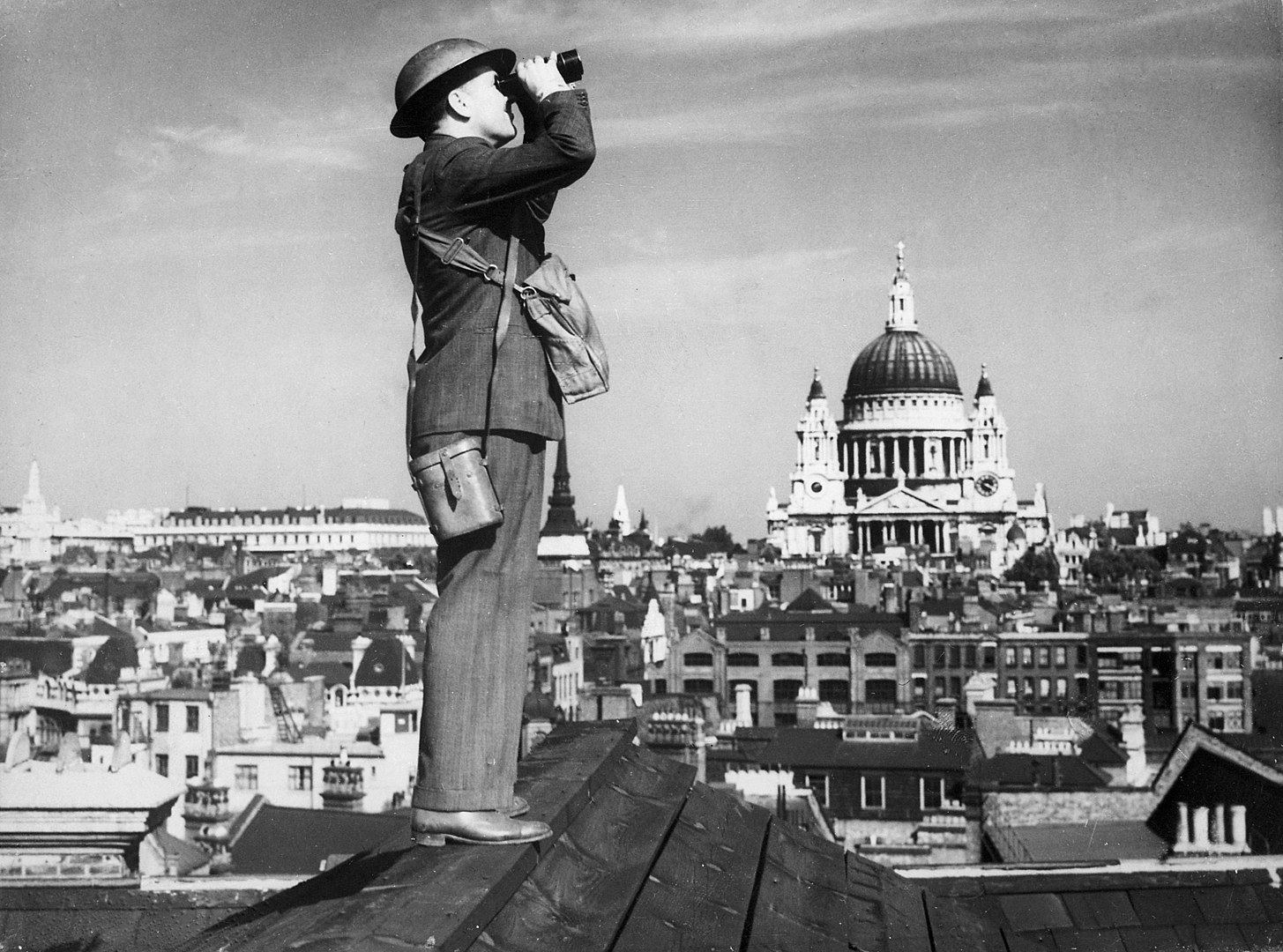
German defeat in the Battle of Britain led Hitler to abandon plans to invade Britain.
Superior British radar and the home field advantage gave them an edge against the Germans. By October 1940, the Germans had lost an estimated 2000 planes, losses they struggled to recover from. In contrast, while the British had lost an estimated 1,800 planes, factories and training produced more planes and pilots with every passing month. This led Hitler to realize that he couldn’t invade Britain and canceled Operation Sealion.
The Germans also launched the Blitz as a result of their defeat in the Battle of Britain.
Even after losing the Battle of Britain, Germany still needed to find some way to force Britain to surrender or negotiate. One solution involved the Blitz, the German word for lightning, with German bombers launching constant attacks against British cities. The Germans set their goals as the destruction of British industry and cause morale to collapse.
In that way, they hoped the British would then come and negotiate. Instead, the bombings only served to harden British resolve to fight to the end. Talk about not helping your case, as we see it here, at WW2 Facts.
German U-Boats used French ports to great effect after the Fall of France.
For one thing, the use of French ports meant that German submarines needed to travel shorter distances to reach their targets. Specifically, merchant ships headed for British ports, though many submarines also operated from Norway and Germany itself. Those ships focused their efforts on the North Atlantic, while those ships based in France focused on British home waters.
Along with new tactics such as the use of wolf-packs to coordinate submarine attacks, the German U-Boats became the only force Churchill admitted to fearing. In fact, it wasn’t until the USA joined the war, and the US Navy reinforced the Royal Navy that the threat of U-Boats began to shrink.
The Japanese occupation of French Indochina led to a harsh Western response.
Japan also forced the Vichy Regime to allow them to station troops in the French colonies of Vietnam, Laos, and Cambodia. This allowed Japanese planes to operate in Southern China and reduced the amount of help the Allies could give the Chinese. The USA responded with freezes of all Japanese assets in the USA and a complete ban on all exports of oil and metal to Japan. This had the effects of threatening to collapse not just the Japanese war effort, but the Japanese economy as well.
Japan immediately tried to negotiate, but the US demands of a withdrawal not just from Indochina but also from China itself proved too much. In Tokyo, the Go-South option became seen as the only way to not only continue the war in China, but also to secure self-sufficiency for Japan, and to remove the Western threat to Japan once and for all.
In September 1940, the Axis officially formed the Tripartite Pact.
Germany, Italy, and Japan made up the core of the alliance, with later members including Bulgaria, Hungary, Romania, and Yugoslavia. Its members agreed to support each other in case of a war against the USA and recognized each member’s respective ambitions in their corner of the world.
They also agreed to share scientific and technological developments with each other. That said, the fact that Germany and Italy stood on the far side of the world from Japan meant that the alliance largely existed only on paper as early as 1941.
The Italians enjoyed a series of successes in Africa in 1940.
The Italians had a good start with the blockade and bombings of the British island of Malta. Later, they succeeded in taking the British colony of Somalia, and even invaded Egypt, then a British protectorate. However, Allied forces counterattacked in East Africa in December 1940, losing control of Eastern Libya in February 1941. By November 1941, only guerillas remained of Italy’s forces in East Africa, which finally surrendered after Italy’s surrender in 1943.
The British later launched a surprise attack on the Italian Navy at Taranto.
Between November 11 and 12, 1940, British planes from the carrier HMS Illustrious attacked the Italian naval base at night. Caught by surprise, and lacking radar and air support, the Italians lost 3 battleships, a cruiser, and 2 destroyers. The Taranto Raid became the first major naval operation with carriers instead of battleships having the main role. It also had the effect of teaching the Japanese, through their Italian ally, many lessons in using planes to attack ships. They would later use those lessons to deadly effect at Pearl Harbor.
Britain won a major victory with the sinking of the Bismarck in May 1941.
One of two modern battleships the Germans built before the war, and more than a match for the British flagship, HMS Hood. On May 24th, 1941, at the Battle of Denmark Strait, the Bismarck sank the Hood in a stunning naval victory. A furious Churchill prioritized the sinking of the Bismarck, helped by the Germans unable to retreat thanks to battle damage from the battle with the Hood. Aircraft from the HMS Ark Royal further damaged the Bismarck on May 26th, and again by destroyers launching torpedoes later that night. Finally, on May 27th, the British battleships Rodney and King George V confronted the Bismarck and sent her to the bottom of the sea.
Germany finally moved to help Italy in 1941.
They did so in response to Allied successes going back to December of the previous year. In February 1941, the Afrika Korps arrived, commanded by the gifted General Erwin Rommel. There, he earned the nickname of Desert Fox, when using blitzkrieg tactics he not only forced the Allies to retreat from Libya but advanced into Egypt and trapped Allied forces in Tobruk.
Germany also invaded Greece and Yugoslavia in 1941.
Yugoslavia actually joined the Axis on March 25th, but on March 27th, pro-British nationalists launched a coup. This led to a German intervention, as well as an invasion of pro-British Greece. The use of paratroopers proved critical in winning by the end of May, especially in Greece, and the island of Crete in particular. This came at a heavy cost, however, with the Germans losing 6000 out of 20,000 paratroopers. Guerilla warfare in Yugoslavia also tied down large numbers of German troops, bleeding them out until the very end of the war. Talk about shooting yourself in the foot, as we see it here, at WW2 Facts.
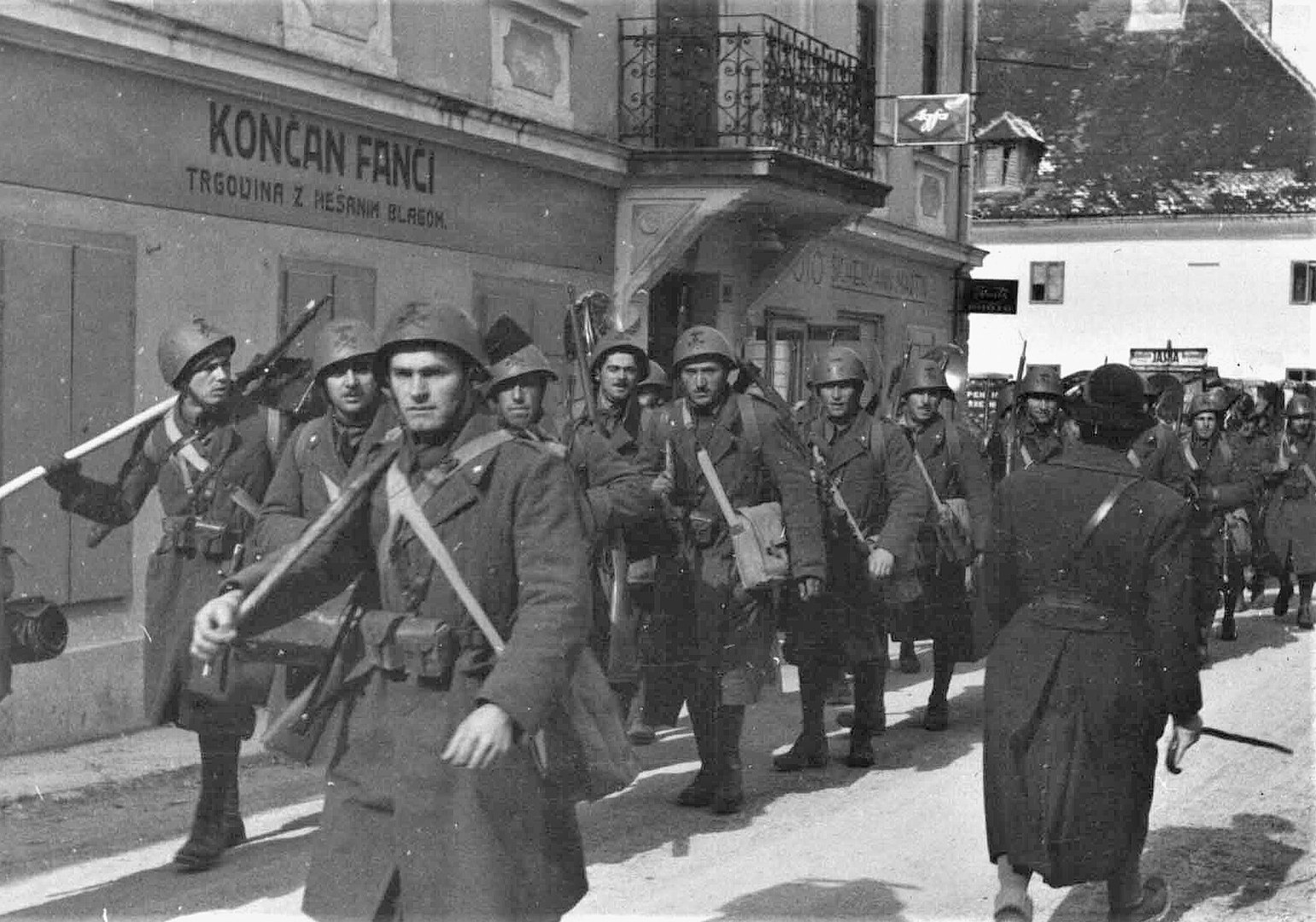
Britain crushed pro-Axis groups in the Middle East around this time.
German-backed Iraqi nationalists led by Rashid Ali launched a coup on April 1st. In response, the British deployed troops from Southeast Asia and Palestine and invaded Iraq. Despite assistance from the Vichy Regime’s troops in Syria and Lebanon, the British crushed the Iraqis by May’s end. Rashid and his allies escaped Germany via Iran, and a pro-British government restored. From June to July, the British then moved to bring Syria and Lebanon under Charles De Gaulle’s Free France, and deny the Axis a base to operate from in the Middle East.
Germany launched Operation Barbarossa in June 1941.
From the start, the invasion of the Soviet Union became the biggest invasion in the history of war. Germany sent 3 million men with 600,000 tanks and another 600,000 tanks across almost 3000 km of border with the Soviet Union. Their short-term goals involved bringing the Baltic Region, the Ukraine, and all Soviet territory up to Moscow under German control. In the long-term, though, the Germans planned to reach the Volga River, and gain control of Soviet territory between Arkhangelsk in the north, and Astrakhan in the south. Talk about ambitious, considering how big all that land is, as we see it here, at WW2 Facts.
As part of the invasion, the Germans also launched Generalplan Ost.
From the start, the main German goal in invading the Soviet Union involved gaining what they called Lebensraum or Living Space. Specifically, land where German settlers could colonize, provide resources to make German industry self-sufficient, and ensure Germany could never lose a war again. The only problem for the Germans was that said land was already settled and developed by others, specifically the Soviet Union. Their answer was Generalplan Ost, involving the extermination of the people living on the land the Germans wanted. The primary means to do so involved deliberately starving or working the people to death, but the Nazi Party also formed groups of killers called Einsatzgruppen. They deliberately hunted down and killed innocent people, including women and children. In the end, only Germany’s defeat prevented Generalplan Ost’s success, but even then, between 5 to 11 million civilians died in the name of Hitler’s dreams.
The other Allies quickly moved to support the Soviet Union after the German invasion.
In particular, they shipped chemicals, food, machinery, and vehicles to the Soviet Union. The other Allies knew that if the Soviets lost to the Germans, Germany would become all but undefeatable. Allied help allowed the Soviets to strip men from farms and factories, and put them in uniform to fight the Germans. It also allowed the Soviets to stop producing civilian goods, and to instead have the factories produce more weapons and ammunition instead. Food from the USA proved especially critical, as the German conquest of the Ukraine cost the Soviet Union much of its best farmlands. Historians agree that without food from the USA, then the Soviets would likely have lost the war after the winter of 1941 to 1942.
The harsh Russian winter led to a German defeat at the Battle of Moscow.
Of course, that’s only one factor, but it proved the last straw for the Germans. Over the past 6 months, the Germans had made stunning successes, crushing army after army and taking over vast stretches of land. But this also meant that their troops had little time to rest, and the large territory they had taken stretched their supply lines to the breaking point. When winter began, the Germans found themselves unable to get the winter gear they needed, or if they got it, they never got enough.
Troops froze in their trenches, while blood and plasma for transfusions became unusable because they’d also frozen solid. Even German tanks became affected by the winter, as fuel and lubricants froze for lack of antifreeze, breaking their internal machinery in the process. All this forced the Germans to retreat from Moscow in January 1942, finally breaking their seeming string of constant victory.
Japan sank the US Pacific Fleet at Pearl Harbor on December 07, 1941.
Japan’s First Air Fleet had left Japan on November 31, and using a storm to cover their approach, closed in on Hawaii. Based from 4 carriers, the Japanese planes launched a surprise attack at dawn and sank 8 American battleships along with many smaller ships. The Americans also lost an estimated 300 aircraft, and an estimated 2000 men dead. In contrast, the Japanese lost only 29 planes.
On the day after the Japanese attack, US President Franklin Roosevelt made his famed Day of Infamy speech and declared war on Japan. In response, Germany and Italy also declared war on the USA.
Japan enjoyed stunning success over the months that followed Pearl Harbor.
Over the next 6 months after Pearl Harbor, Japan quickly seized control of Southeast Asia. Thailand allowed Japanese troops to pass through their country, allowing Japan to invade Burma and Malaysia at the same time. Hong Kong fell quickly, as did the American islands of Guam and Wake. Japan landed troops on the Philippines and Indonesia, and after sinking the British battleships Repulse and The Prince of Wales took Singapore.
While Filipino resistance delayed the Japanese conquest, the Philippines fell under Japanese control by May 1942. By then, the Japanese could threaten the American island of Midway, and the Australian forces in Papua New Guinea.
The USA finally won a major victory against Japan at Midway in June 1942.
In an ironic example of WW2 Facts, this was exactly 6 months after Pearl Harbor. The irony comes from Japanese Admiral Isoroku Yamamoto warning his colleagues about the need for a quick war against the USA. He predicted that Japan could win 6 months of battles and campaigns against the USA, but if they couldn’t win the war by then, defeat was the only outcome.
In June 1942, having broken Japanese military codes, the US Navy lured the Imperial Japanese Navy (IJN) into a trap at Midway. Centered around 3 carriers, the US Navy defeated the Japanese, sinking 4 carriers while only losing one of their own. It was a defeat the IJN would never recover from and would mark the beginning of the collapse for Japan’s war effort.
Japan and the USA fought a bloody battle in the Solomon Islands from 1942 to 1943.
This conflict mostly sought control over the island of Guadalcanal, where Japanese forces had built an airfield. From the said airfield, they could threaten the surrounding waters and even Australia in the distance. In August 1942, US Marines landed on the island, with strong air and naval support. Japanese troops withdrew into the jungles and fought the Americans in guerilla warfare.
More Japanese troops and ships soon arrived, with the Allies responding in kind. Heavy fighting continued until February 1943, until the Japanese finally decided to abandon the island.
The German suffered a crushing defeat from the Soviets at Stalingrad in the winter of 1942.
German forces had actually invaded the Soviet Union’s Caucasus region earlier in the year, with the goal of taking the oil fields in Georgia and Azerbaijan. In August, though, they found themselves held up at the city of Stalingrad, which controlled the crossings over the Volga River. While the Germans could just bypass the city, doing so would leave their rear exposed to the counterattack. Knowing this, the Soviets set a trap and moved to encircle the Germans in winter. The German generals pleaded with Hitler to allow them to retreat. Hitler refused, resulting in an entire Germany trapped and forced to surrender to the Soviets.
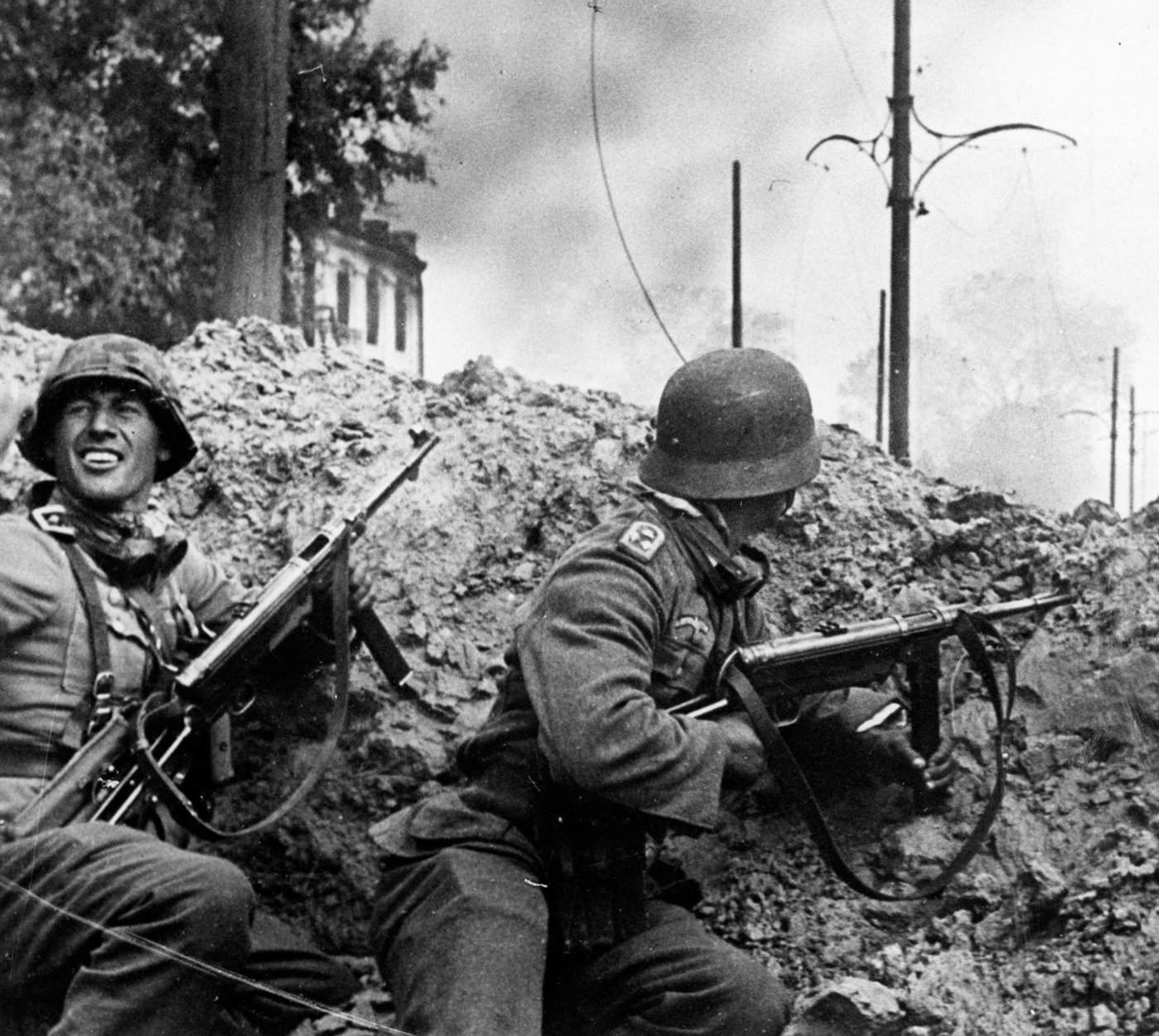
The Western Allies also began pushing the Axis back in late 1942.
In August 1942, British and Commonwealth forces defeated Rommel’s Afrika Korps at the Second Battle of El Alamein. Soon after, they also broke the Italian blockade of Malta while launching a counterattack into Libya. In November 1942, British and American forces launched Operation Torch, and successfully landed troops in the then-French colony of Morocco.
The presence of Allied troops led French colonial leaders to join the Allies, and causing Hitler to occupy the rest of France. Further to the east, the Allies forced Rommel to retreat into Tunisia, though, he managed to defeat them at Kasserine Pass in February 1943. That only delayed the inevitable, however, with Rommel forced to evacuate back to Europe in May.
The Casablanca Conference saw the Allied decide on unconditional surrender as their war goal.
The conference shares the name of its host city, Casablanca in Morocco, held between January 14 to 24, 1943. There, Allied leaders discussed and agreed on a series of shared goals for the war. The most important of those was the agreement to fight on until the Axis Powers unconditionally surrendered to the Allies. Both Churchill and Stalin originally opposed such a demand, fearing that it would only harden Axis resolve to fight. However, Roosevelt believed that they needed to force the Axis to such an end, making it clear to future generations that the Axis had truly lost the war. Otherwise, it would only repeat the mistakes at the end of WWI and set the stage for another war in the future. How’s that for historic WW2 Facts?
The Allied Bombing Campaign began in June 1943.
The British and the Americans divided the campaign between them, with the Americans flying in the day, and the British at night. They set as their goal the destruction of Germany’s industry, and to break the German people’s will to fight. Whether they succeeded in the latter remains argued among historians today, while the Allies only really met their first goal in 1944.
By then, the German Luftwaffe had become overwhelmed, allowing Allied bombers to operate freely. The large number of civilian casualties, over 600,000, also causes much debate even today whether or not the campaign counts as a war crime. Talk about divisive examples of WW2 Facts.
In August 1943, the Soviets won another major victory at Kursk.
The Germans actually started the Battle of Kursk, with Operation Citadel, launched in July 1943. They aimed to retake the lead in the war in the east, and finally defeat the Soviets. Germany could then focus on the threat of the Western Allies. The Soviets used heavy fortifications to slow down the Germans and wear them out.
Once the Germans wore themselves out, the Soviets counterattacked and forced the Germans to retreat across 2000 km of the front lines. This defeat ended any and all German hopes of winning the war against the Soviet Union.
The Allies invaded Italy in September 1943.
They started with an invasion of Sicily, before crossing the Strait of Messina to land in Southern Italy. Meanwhile, Italian royalists launched a coup, arresting Mussolini, and agreeing to a separate ceasefire with the Allies. German troops intervened, however, and freeing Mussolini, linked up with fascist Italian troops in Northern Italy. This resulted in a civil war between the royalists and the fascists, forcing Allied troops to fight their way north. The campaign ended in November 1943, with the Allies facing the German defenses in Northern Italy.
The Soviets steadily pushed the Germans back over 1943 to 1944.
The Germans tried to hold the Soviets back along the Dnieper River, but by October the Soviets had broken through at Smolensk. By December, the German line along the Dnieper had collapsed, with only winter stopping the Red Army’s advance. In January 1944, the Soviets pushed the Germans back from Leningrad. By May, the Soviets had also retaken the Crimea and had pushed the Germans out of the Ukraine. They also attempted to attack Germany’s ally Romania, but the Germans and Romanians managed to hold them off.
The Japanese won unexpected victories in China in 1944.
Allied successes in Burma had led the Imperial Japanese Army (IJA) to launch Operation Ichi-Go. The IJA set as its goals the occupation of the Southern Chinese coast and linking up with their troops in Indochina. Allied intelligence warned the Chinese in advance, but repeated successes in defending Changsha had made the NRA overconfident.
Over the course of April to December, the Japanese first captured Luoyang, followed by Changsha, Henyang, Guilin, and Liuzhou. By the year’s end, the Japanese had achieved their goals and forced the NRA to retreat into the interior. The operation’s success also had the effect of keeping the Allies from basing bombers in China to attack Japan.
The Western Allies began their liberation campaign in Western Europe in June 1944.
On June 6th, 1944, an estimated 20,000 Allied troops, supported by an estimated 7000 ships, landed along 80 km of the Normandy coast. Opposed by some 50,000 German troops, the Allies quickly secured their landing zones, allowing reinforcements to pour in. Allied forces quickly swelled to nearly 160,000 men, and forcing German forces to retreat.
From there, Allied forces advanced inland, and liberated Paris on August 25. They then suffered an unexpected defeat in the Netherlands in September. Even then, it could only slow the Allied advance, not stop it. By the year’s end, the Allies had invaded Germany, stopping at the Ruhr River.
The Soviets crushed the Germans with Operation Bagration in that same month.
On June 22, the Soviets launched Operation Bagration, with the goal of destroying the German forces in Belarus. Some 1.6 million Soviets troops faced off against 500,000 German troops, the overwhelming difference in numbers making the battle’s outcome a foregone conclusion. Soviet troops outflanked and surrounded the Germans, who fought hard and inflicted an estimated 800,000 casualties on the Soviets.
In return, the Germans lost 450,000 men, with the remaining 50,000 marching into Soviet prison camps. The Soviet’s victory effectively destroyed the German Army and ended any hopes of Germany somehow forcing the Allies to negotiate.
The Soviets won victory after victory over the latter half of 1944.
In July, the Soviets launched another operation that succeeded in forcing a German retreat from Eastern Poland. In August, another push into Romania finally defeated the Germans there and allowing Communist revolts in Romania and Bulgaria to succeed.
This, in turn, allowed the Soviets to pass through both countries to Yugoslavia. This forced the Germans to hurriedly evacuate their troops from the region to avoid them getting cut off. In October, the Soviets invaded Hungary, with Budapest falling in February 1945.
The US Navy broke the Imperial Japanese Navy in the Battle of the Philippine Sea.
Centered around 15 carriers and 7 battleships, the US Navy faced off against the IJN, centered around 9 carriers and 4 battleships. In addition to having more ships and planes than the Japanese, the Americans had the advantage of more advanced machines. Their pilots also had an edge against the Japanese, whose losses had forced them to rely on pilots fresh out of training in the battle. From June 19 to 20, 1944, the Japanese lost 600 out of 800 planes, along with 3 carriers.
In contrast, the Americans lost only 100 out of 900 planes, and no carriers or battleships at all. This victory allowed the Americans to launch their liberation of the Philippines.
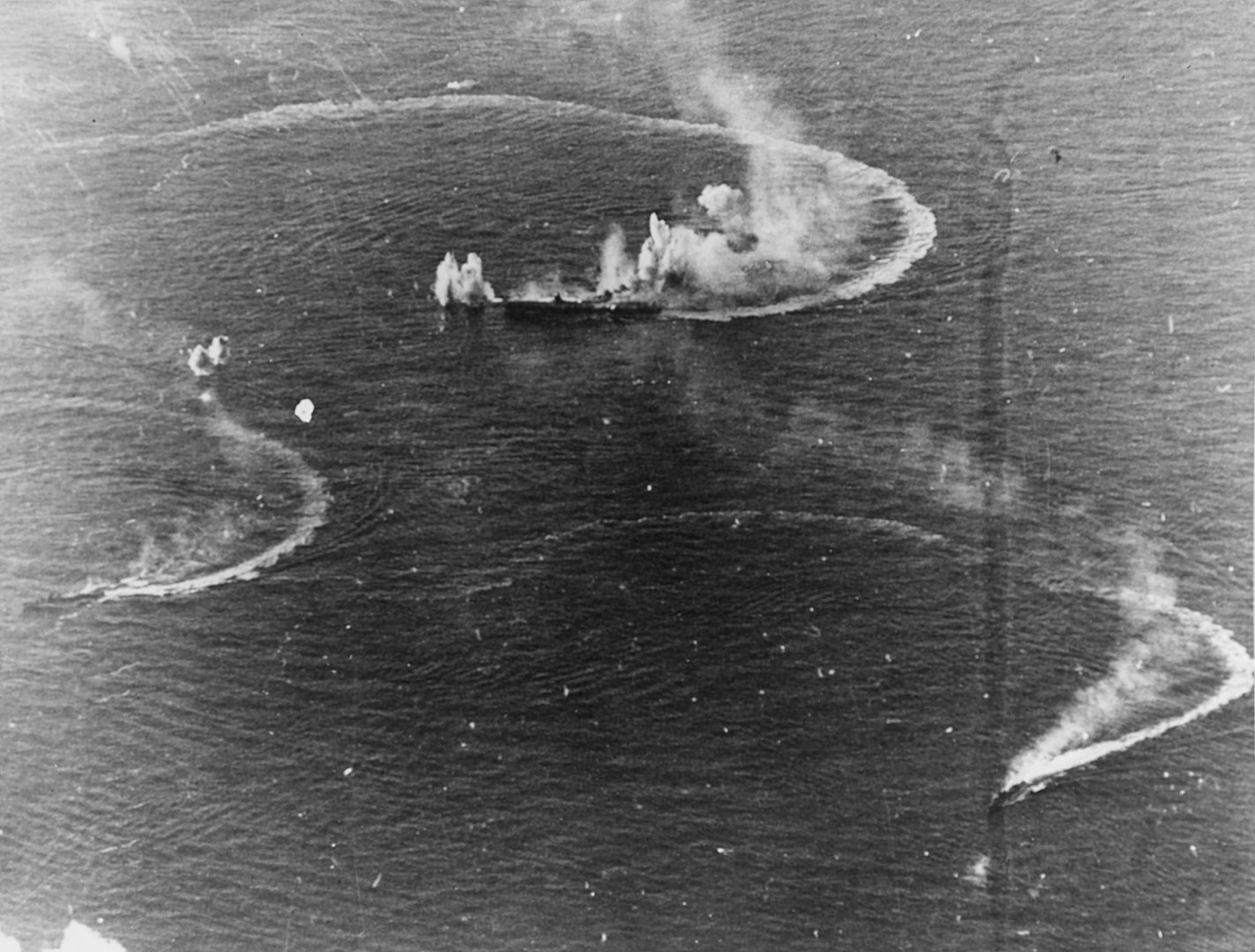
The Battle of Leyte Gulf further weakened Japan’s navy.
For this battle, 34 American carriers and 12 battleships faced off against just 5 Japanese carriers and 9 battleships. Including smaller ships, the Americans had a fleet of some 300 ships, against only 70 Japanese ships. From October 23 to 26, 1944, the Japanese lost 4 carriers and 3 battleships, along with all 300 planes they started with.
In contrast, the Americans lost only 3 carriers, and 200 out of some 1500 planes they started with. The Japanese defeat in this battle effectively destroyed the IJN. Yet another lopsided victory to think about, as we see it here, at WW2 Facts.
The Battle of the Bulge in December 1944 marked Germany’s last effort to win the war.
Beginning on December 16, the German Army drove through the Ardennes Forest. They aimed to cut off and surround the Allied forces to the north. Another goal included capturing Antwerp in Belgium, cutting off Allied supply lines, in the hopes of forcing the Allies to negotiate. However, determined Allied resistance stopped the German advance, and an Allied counterattack forced the Germans to retreat.
Allied forces steadily crushed the Germans over the first months of 1945.
In January, Soviet troops forced the Germans from Poland. They also occupied East Prussia and advanced all the way to the Oder River. Silesia and Pomerania fell in February to the Soviets, while the Western Allies reached the Rhine River in the same month. They crossed the river in March, while the Soviets made gains in Austria and finally took Konigsberg. The Western Allies took Hamburg and then Nuremberg in April, before meeting with the Soviets along the Elbe River.
Hitler committed suicide as Soviet forces fought their way into Berlin.
The Red Army and Communist Polish forces took Berlin on April 25th, but German forces in the city continued to fight. Hitler also remained in the city, hiding in his bunker, before committing suicide on April 30th. With Hitler’s death, the position of Nazi Germany’s Fuhrer went to Grand Admiral Karl Donitz in Kiel.
The German troops in Berlin surrendered on May 2nd, and on May 8th, Donitz unconditionally surrendered Germany to the Allies. That day would go down in history as Victory in Europe (VE) Day for future generations.
Allied submarines starved Japan by 1945.
The US Navy had actually deployed submarines against Japan as early as 1942, after the attack on Pearl Harbor. They focused on Japan’s merchant ships, which the island nation depended on to bring food and raw materials from overseas. By 1943, Japan’s merchant fleet had suffered heavy losses, forcing Japan to start rationing food and raw materials. By 1945, starvation had started to set in, even for the military units on the Home Islands, who had priority for supplies in preparation for the expected Allied invasion.
Japan suffered a large-scale bombing campaign in 1945.
Unlike Germany, heavy Allied bombing did not begin until January 1945, because of the lack of airfields close enough to Japan. Even more so, as the Soviet Union refused to allow US troops to operate from their soil. With the fall of the Philippines and many islands across the North Pacific, however, the US Army Air Force finally had their airfields. Much like in Germany, the Allies aimed to destroy Japan’s industry, and break the Japanese’s will to fight.
Even worse for Japan, unlike in the west, most Japanese homes at this time used wood and paper instead of steel and concrete as building materials. This made the bombings more devastating than expected, as massive fires burned out of control across Japan’s cities. For instance, a single bombing run on Tokyo on the night of March 09 to 10 killed over 100,000 people alone.
Japan increasingly became desperate as Allied forces steadily closed in on the Home Islands.
This led to the formation of what they called the Special Attack Force, with the kamikaze as the most infamous. Literally meaning Divine Wind, they took their name from a pair of typhoons that saved Japan from Mongol invaders in the 13th Century. The kamikaze of WW2 had Japanese pilots flying planes loaded with bombs and fuel directly into Allied ships. In addition to the kamikaze, the Japanese also built special mini-subs.
Once they approached Japan itself, they planned to ram these subs into Allied ships. On the Home Islands, the Japanese also organized civilians into militia, in preparation for guerilla war against the expected Allied invasion. Only the kamikaze ever fought against the Allies, though. And out of 3800 kamikazes, only 47 actually succeeded in sinking Allied ships.
The nuclear bombing of Hiroshima and Nagasaki finally forced Japan to surrender.
By July 1945, the Allies had everything they needed to invade Japan, and indeed, set the invasion for November. The Soviets also planned to invade Manchukuo in August. But US President Harry Truman had many concerns about the invasion, especially about the expected heavy resistance from the Japanese. Predicted Allied losses alone ran up to 2 million at least and predicted civilian casualties went up even higher.
Truman found the thought of so many deaths uncomfortable, and decided to try and convince Japan to surrender using an ultimate weapon. On August 6th, the USA nuked Hiroshima, and on August 9, they nuked Nagasaki as well. Over an estimated 200,000 people died, but as Truman hoped, Japan surrendered in the face of complete destruction. Historians today still argue over the ethics of Truman sacrificing 200,000 people to save millions more.
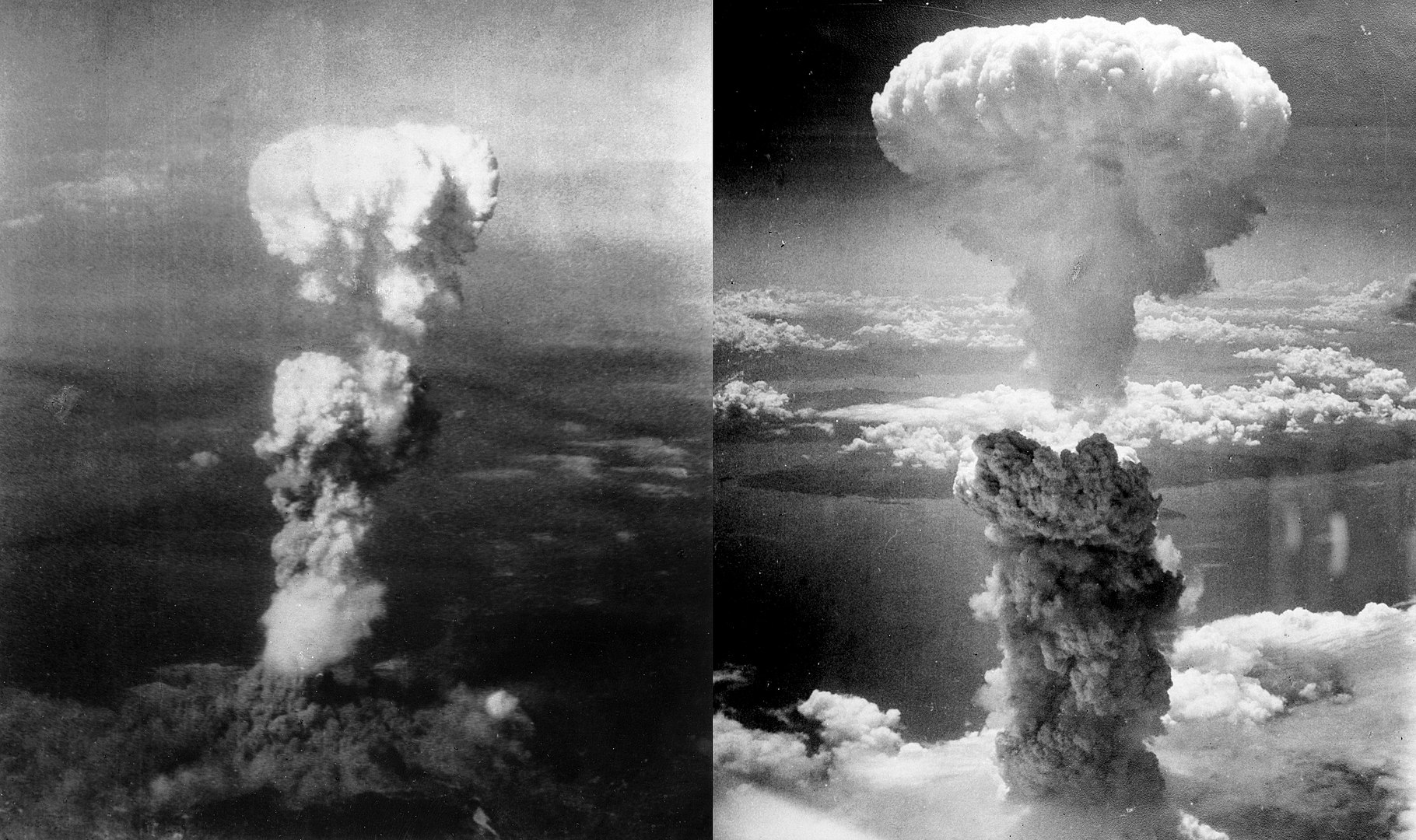
Was this page helpful?
Our commitment to delivering trustworthy and engaging content is at the heart of what we do. Each fact on our site is contributed by real users like you, bringing a wealth of diverse insights and information. To ensure the highest standards of accuracy and reliability, our dedicated editors meticulously review each submission. This process guarantees that the facts we share are not only fascinating but also credible. Trust in our commitment to quality and authenticity as you explore and learn with us.


